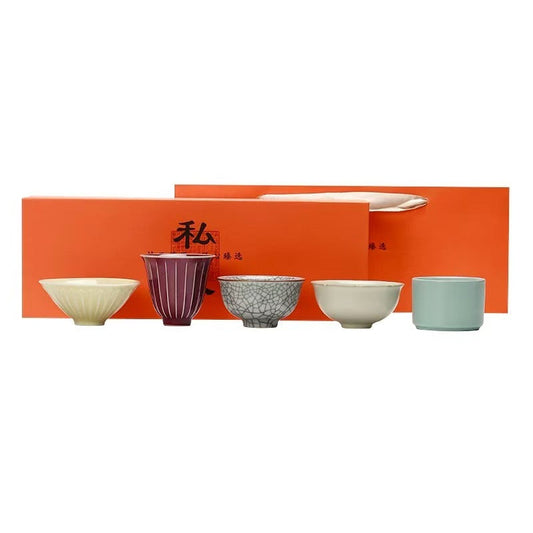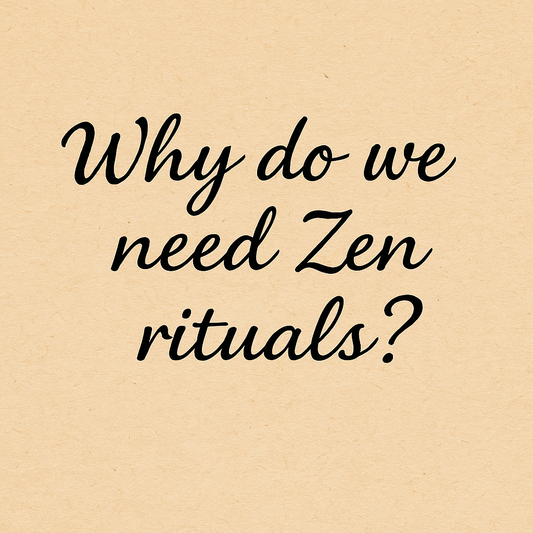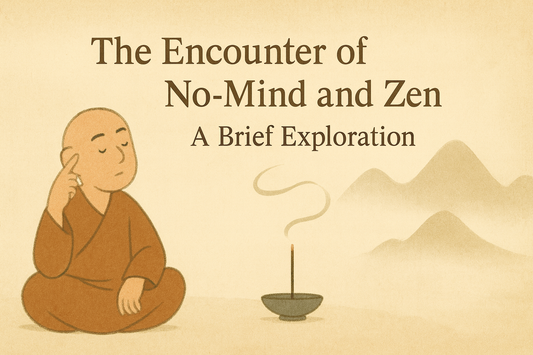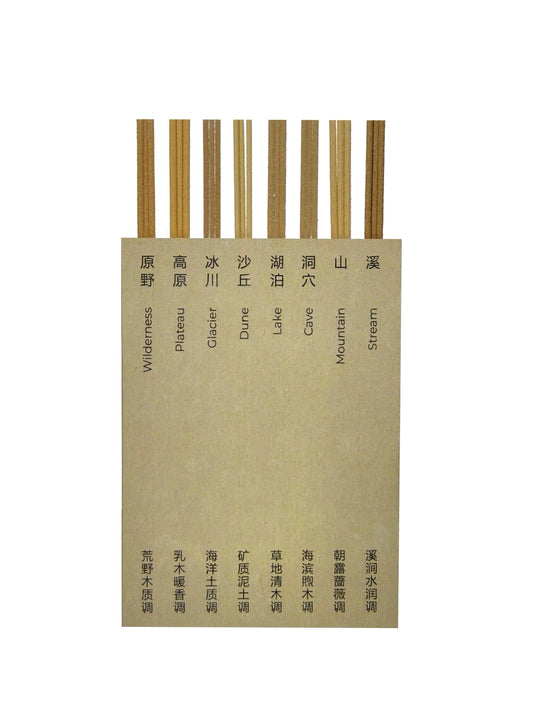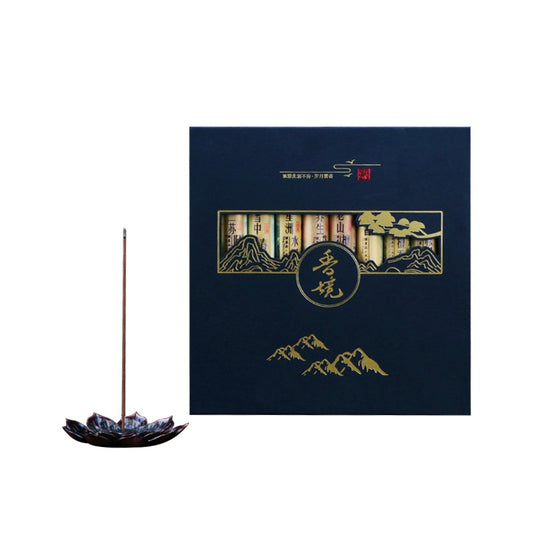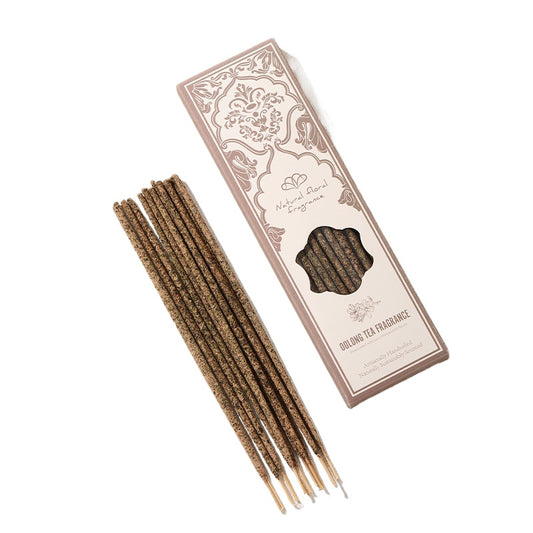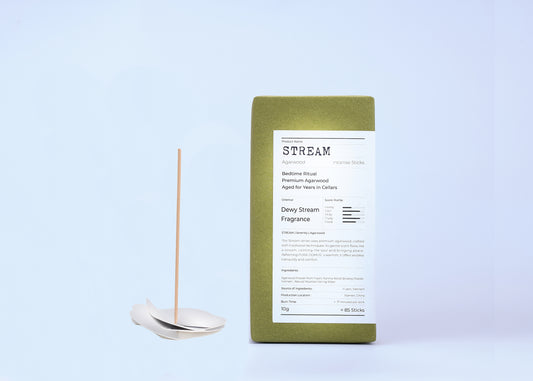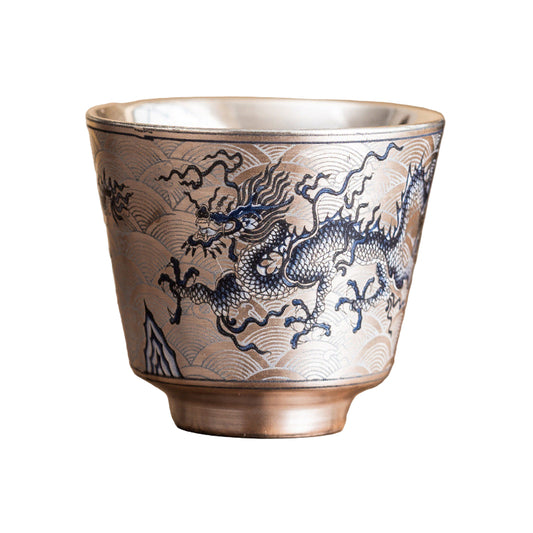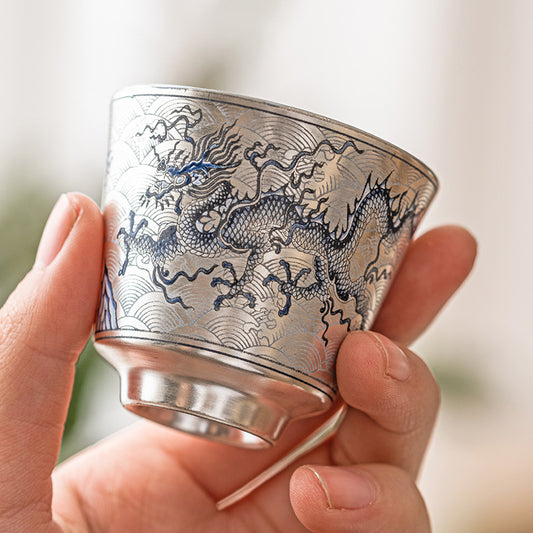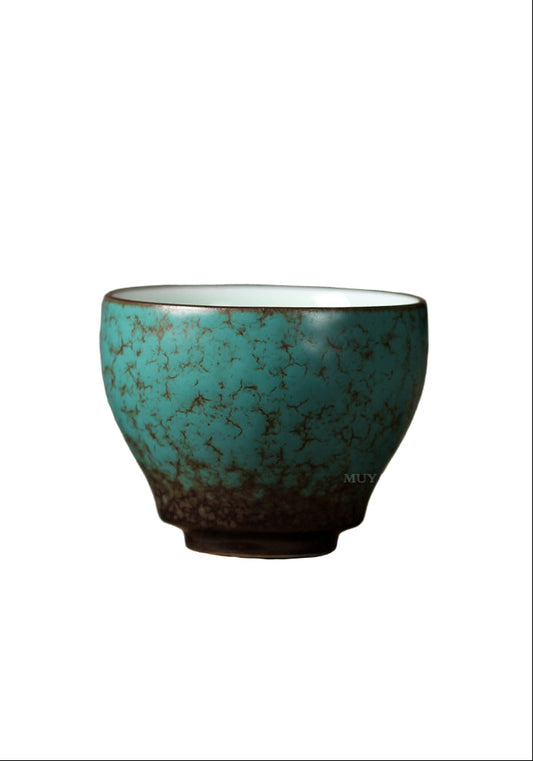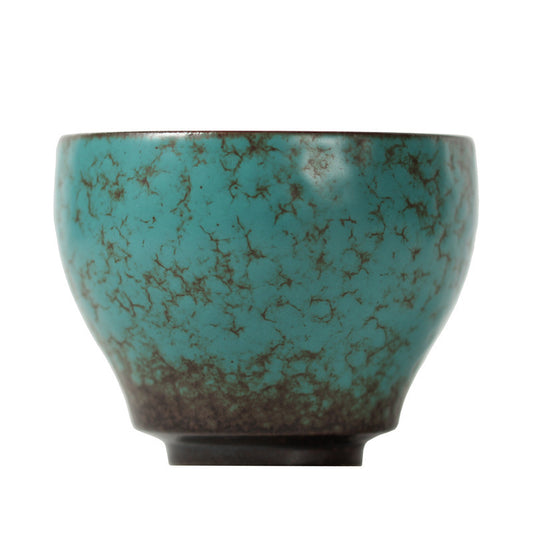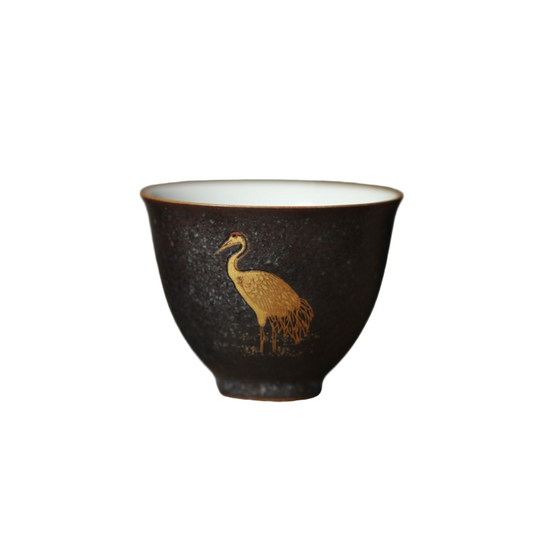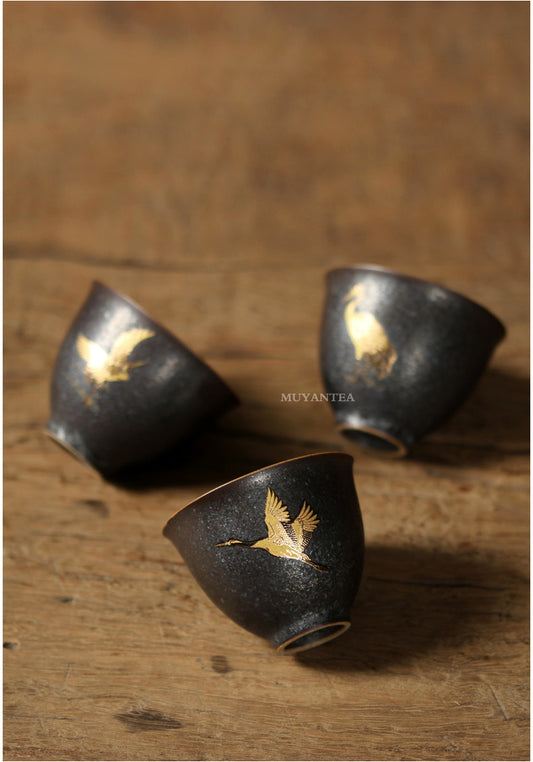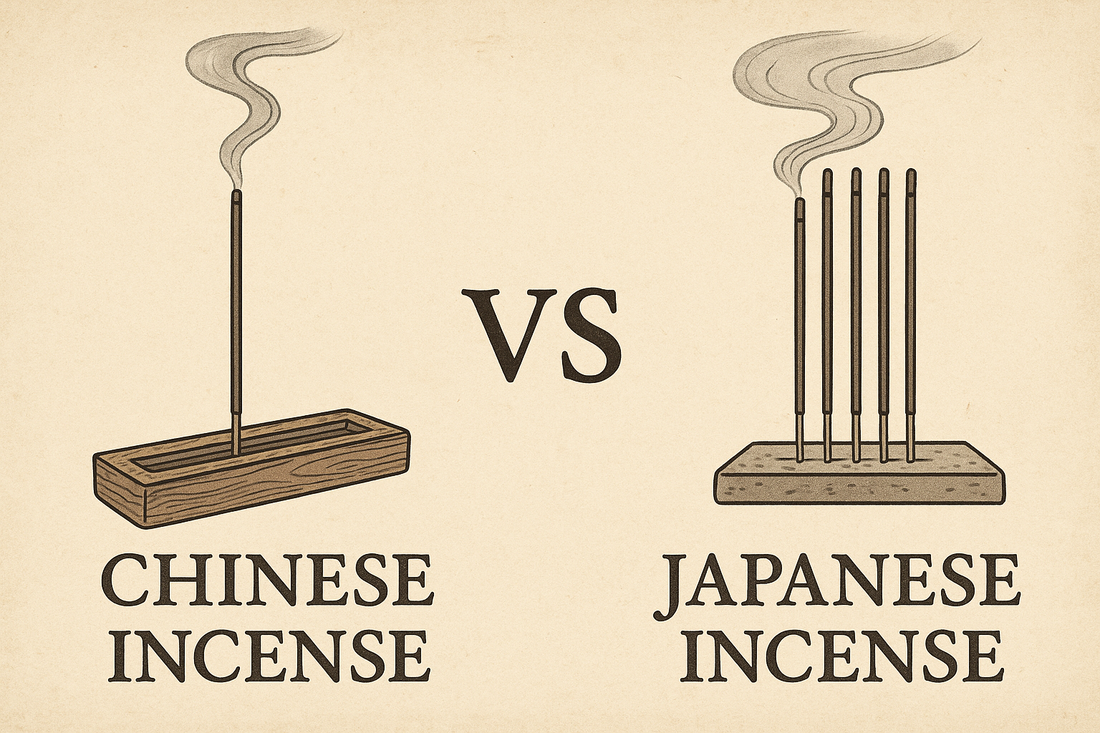
Chinese Incense vs. Japanese Incense
Chinese Incense vs. Japanese Incense: The Ancient Art of Aroma, Decoded for the Modern World
Alright, let's talk incense. Not just any incense, but the deep, rich traditions of Chinese and Japanese incense. If you've ever found yourself in a tranquil temple in Kyoto, or a bustling tea house in Beijing, you'll know that the air carries more than just scent; it carries history, philosophy, and a profound sense of place. But what\'s the real difference between these two aromatic powerhouses? Is it just a matter of geography, or is there something deeper at play? If you're in a quiet London flat, trying to choose the perfect scent for your meditation, or a vibrant Sydney studio, seeking to understand the nuances of Eastern aroma, this guide is for you. We\'re going to cut through the noise and give you the unvarnished truth, so you can make an informed choice that truly resonates with your space and spirit.
Round 1: The Philosophical Roots – More Than Just a Scent Chinese incense philosophy Japanese incense Kōdō
Both Chinese and Japanese incense traditions are deeply intertwined with their respective cultures, philosophies, and spiritual practices. But their origins and underlying principles diverge in fascinating ways.
Chinese Incense: The Way of Fragrance (Xiangdao) Xiangdao Chinese incense culture
Chinese incense culture, known as Xiangdao (香道), or the Way of Fragrance, has a history spanning thousands of years, deeply rooted in Confucianism, Buddhism, and Taoism. It's not just about making a room smell nice; it's a holistic cultural expression that fosters self-cultivation, ritual propriety, and a connection to the divine. From the Shang Dynasty, incense was used in rituals to communicate with ancestors and deities. Later, it became an integral part of scholarly pursuits, meditation, and daily life, symbolizing purity, respect, and spiritual refinement. The emphasis is often on the qi (氣) or vital energy of the fragrance, and its ability to harmonize the environment and the individual. Think of the grand, intricate ceremonies in ancient Chinese courts, or the quiet contemplation in a Taoist temple in the mountains of Sichuan – incense was always at the heart of it.
- Core Philosophy: Holistic self-cultivation, ritual, harmony, connection to ancestors and deities.
- Historical Context: Thousands of years, intertwined with Confucianism, Buddhism, Taoism.
- Key Concept: Qi (vital energy) of fragrance.
Japanese Incense: The Way of Scent (Kōdō) Kōdō Japanese incense art form
Japanese incense culture, or Kōdō (香道), the Way of Scent, was heavily influenced by Chinese traditions, particularly during the Tang Dynasty when Buddhism and its associated practices were introduced to Japan. However, Kōdō evolved into a distinct art form, emphasizing appreciation, refinement, and a deep, almost meditative focus on the subtle nuances of scent. It's less about the grand ritual and more about the intimate, personal experience of fragrance. Kōdō is one of the three classical Japanese arts of refinement, alongside ikebana (flower arranging) and chado (tea ceremony). It often involves a structured ceremony where participants identify and appreciate different incense aromas, fostering a sense of mindfulness and aesthetic sensitivity. The focus is on the purity of the scent and the quiet contemplation it inspires. Imagine a serene tea room in Kyoto, where every gesture is deliberate, and the subtle wisp of agarwood smoke is savoured.
- Core Philosophy: Aesthetic appreciation, refinement, mindfulness, subtle nuances of scent.
- Historical Context: Influenced by Chinese traditions, evolved into a distinct art form.
- Key Concept: Kōdō (Way of Scent), intimate personal experience.
Round 2: Ingredients & Composition – What Are They Made Of? Chinese vs Japanese incense ingredients
The materials used in Chinese and Japanese incense reflect their philosophical underpinnings and available resources. While there's overlap, each tradition has its preferred palette.
Chinese Incense: A Symphony of Herbs and Resins Chinese incense ingredients traditional medicine
Chinese incense often features a complex blend of natural ingredients, emphasizing medicinal properties and a rich, sometimes earthy aroma. Common ingredients include:
- Agarwood (沉香 - chénxiāng): Highly prized, known for its deep, complex, and calming aroma. Often considered the king of incenses.
- Sandalwood (檀香 - tánxiāng): Sweet, woody, and grounding. Used for meditation and relaxation.
- Frankincense (乳香 - rǔxiāng): Resinous, with a balsamic, slightly citrusy scent. Used for purification and spiritual connection.
- Myrrh (沒藥 - mòyào): Earthy, bitter, and warm. Often blended with frankincense.
- Herbs and Spices: Clove, cinnamon, star anise, patchouli, and various traditional Chinese medicinal herbs are frequently incorporated for their aromatic and therapeutic qualities. The blends are often designed to balance yin and yang and promote specific health benefits according to Traditional Chinese Medicine (TCM) principles. You might find these intricate blends in a traditional Chinese pharmacy in London's Chinatown or a specialist herbalist in Manchester.
Chinese incense often comes in stick form (with or without a bamboo core), coils, and powders. The presence of a bamboo core in some Chinese sticks is a practical difference from most Japanese incense.
Japanese Incense: Purity and Subtlety Japanese incense ingredients pure subtle
Japanese incense, particularly the high-quality varieties used in Kōdō, prioritizes purity, subtlety, and a clean burn. The emphasis is on showcasing the natural aroma of a few key ingredients, rather than complex blends. Common ingredients include:
- Agarwood (沈香 - jinkō): The most revered ingredient, often used alone or with minimal blending to highlight its exquisite fragrance. Japanese agarwood is meticulously graded.
- Sandalwood (白檀 - byakudan): Sweet, creamy, and woody, often used as a base or primary note.
- Cinnamon (桂皮 - keishi): Adds a warm, spicy note.
- Clove (丁子 - chōji): Pungent and aromatic.
- Borneol (龍脳 - ryūnō): A crystalline substance with a camphor-like scent, used for cooling and clarity.
Japanese incense is almost exclusively made without a bamboo core, resulting in a purer, less smoky burn. It often comes in delicate stick forms, cones, and pressed coils. The scent profile tends to be cleaner, more refined, and less overtly smoky than many Chinese varieties, making it highly prized in minimalist settings, from a modern flat in Sydney to a serene studio in Brighton.
Round 3: Usage & Application – When and Where to Burn? Chinese vs Japanese incense uses
The way incense is used in each culture reflects its underlying philosophy and composition.
Chinese Incense: Ritual, Medicine, and Daily Life Chinese incense ritual daily use
In China, incense is integral to a wide range of activities:
- Religious and Spiritual Practices: Central to Buddhist, Taoist, and ancestral worship ceremonies. Used to purify space, offer to deities, and aid meditation.
- Traditional Medicine: Certain incense blends are used for their therapeutic properties, believed to improve qi flow, alleviate symptoms, and promote well-being.
- Daily Life: Used for timekeeping, enhancing scholarly pursuits, purifying homes, and simply enjoying fragrance. The elaborate incense clocks are a testament to its role in daily rhythm.
- Setting the Scene: From grand temples in Beijing to quiet studies in Guangzhou, Chinese incense is used to create a specific atmosphere, often rich and enveloping.
Japanese Incense: Appreciation, Meditation, and Hospitality Japanese incense appreciation meditation hospitality
Japanese incense use is often more focused on aesthetic appreciation and personal refinement:
- Kōdō Ceremonies: Formal ceremonies dedicated to the appreciation of incense, where participants engage in a meditative practice of identifying and appreciating different scents.
- Meditation and Mindfulness: Used to create a serene environment for meditation, aiding concentration and inner peace. The subtle, clean aromas are less distracting.
- Hospitality: Often burned to welcome guests, purify a space, or simply to add a touch of refined elegance to a home or business. Think of the subtle fragrance in a traditional ryokan in Kyoto.
- Personal Enjoyment: Many Japanese incense users appreciate the subtle, evolving fragrance for personal contemplation and relaxation.
Round 4: Aroma Profile – What Do They Actually Smell Like? Chinese vs Japanese incense aroma comparison
This is where the rubber meets the road, or rather, where the smoke meets your nose. The scent profiles are distinct, reflecting the ingredients and cultural preferences.
Chinese Incense: Rich, Complex, and Often Earthy Chinese incense scent profile earthy complex
Chinese incense tends to be more robust, complex, and often has a heavier, earthier base. The blends are intricate, designed to create a multi-layered aromatic experience. You might encounter notes of:
- Deep Woods: Rich agarwood and sandalwood are prominent, often with a more resinous, ancient forest feel.
- Spicy Undertones: Clove, cinnamon, and other spices add warmth and complexity.
- Herbal Notes: Depending on the blend, subtle or pronounced herbal notes from TCM ingredients can be present.
- Overall Impression: Often described as profound, grounding, and sometimes more overtly smoky. It fills a space with a commanding presence, perfect for a grand hall in Beijing or a bustling market in Guangzhou.
Japanese Incense: Clean, Subtle, and Refined Japanese incense scent profile clean subtle
Japanese incense, in contrast, is known for its purity, subtlety, and clean burn. The aromas are often more delicate, focusing on the natural essence of high-quality woods. You might find:
- Pure Wood Notes: Emphasis on the natural, nuanced scent of agarwood and sandalwood, often lighter and sweeter.
- Minimal Spice: Spices are used sparingly, often to enhance the wood notes rather than dominate them.
- Clean Finish: Less smoky residue, allowing the pure fragrance to shine through. This makes it ideal for smaller, more intimate spaces, like a minimalist apartment in Tokyo or a quiet study in London.
- Overall Impression: Often described as elegant, ethereal, and calming. It creates a gentle, lingering presence that invites contemplation.
Round 5: Burn Characteristics – How Do They Perform? Chinese vs Japanese incense burn comparison
The physical act of burning also differs, influencing the experience and practical considerations.
Chinese Incense: Visible Smoke, Robust Burn Chinese incense smoke burn time
Chinese incense, particularly stick varieties with a bamboo core, tends to produce more visible smoke. This is often part of the ritual, with the rising smoke carrying prayers or intentions. The burn can be more vigorous, and the ash production might be higher.
- Smoke: More visible, often a thicker plume.
- Ash: Can produce more ash, requiring a larger or more frequent ash disposal.
- Burn Speed: Varies, but generally a consistent, robust burn.
Japanese Incense: Minimal Smoke, Clean Burn Japanese incense low smoke clean burn
Japanese incense, especially the coreless varieties, is designed for a very clean, low-smoke burn. This is a key aspect of its refined aesthetic, allowing the pure fragrance to be appreciated without visual distraction or excessive particulate matter. The ash often holds its shape, forming a delicate, elegant line.
- Smoke: Minimal, often barely visible, a thin wisp.
- Ash: Less ash, often retains its shape, making cleanup easier.
- Burn Speed: Consistent, often slower, allowing for prolonged appreciation of subtle notes.
Common Questions: Chinese Incense vs. Japanese Incense (FAQ) Chinese Japanese incense FAQs
Still wondering which one is for you? Let\'s clear up some common queries.
Q: Which is better for daily use? daily incense use Chinese Japanese
A: Both can be used daily, but your preference might depend on your environment and sensitivity. Japanese incense, with its minimal smoke and subtle aroma, is often preferred for daily use in smaller, less ventilated spaces, like a city apartment in London or a compact studio in Sydney. Chinese incense, with its richer, more complex scent and often more visible smoke, might be better suited for larger spaces or when you desire a more pronounced aromatic experience. Always ensure good ventilation, regardless of your choice.
Q: Can I use Chinese and Japanese incense together? combine Chinese Japanese incense
A: While you certainly can burn them simultaneously, it's generally not recommended if you want to fully appreciate the unique nuances of each. Their distinct aromatic profiles can clash or overpower each other. It's like trying to appreciate a fine wine and a complex craft beer at the same time – you'll miss the subtleties of both. However, for a general pleasant aroma without deep appreciation, there's no harm. Experiment in your own space, perhaps in a tranquil home in the Cotswolds, to see what resonates with you.
Q: Which is more expensive? Chinese Japanese incense cost comparison
A: Both Chinese and Japanese incense can range from very affordable to incredibly expensive, depending on the quality and rarity of ingredients, especially agarwood. High-grade agarwood from either tradition can fetch astronomical prices. Generally, Japanese incense tends to be perceived as more refined and often comes with a higher price tag for comparable quality due to its emphasis on purity and meticulous craftsmanship. However, exceptional Chinese incense, particularly those with rare wild agarwood, can be equally, if not more, costly. It's an investment in sensory experience, whether you're in a bustling market in Manchester or a serene shop in Kyoto.
Q: How do I choose between them? choose Chinese Japanese incense guide
A: It comes down to personal preference and your intention. If you seek a profound, complex, and sometimes more overtly spiritual experience with richer, earthier aromas, Chinese incense might be your calling. If you prefer subtle, clean, and refined fragrances that invite quiet contemplation and aesthetic appreciation, Japanese incense could be your perfect match. Consider the size of your space, your sensitivity to smoke, and the mood you wish to create. Perhaps try a small selection of both, from a reputable supplier in London or a specialist importer in Sydney, and let your nose decide.
The MonianLife Perspective: Bridging Worlds, Honoring Tradition MonianLife Chinese Japanese incense
At MonianLife, we don't believe in rigid distinctions; we believe in the power of aroma to transform your space and elevate your spirit. We understand that whether you're drawn to the ancient wisdom of Chinese incense or the refined elegance of Japanese incense, your journey is personal. We meticulously source natural ingredients and craft our incense collection and minimalist incense holders to honor both traditions, ensuring a clean, pure burn that resonates with mindful living. We've seen over 85% of our customers return, a testament to the quality and authentic experience we offer. We're not just selling products; we're selling moments of calm, clarity, and connection, wherever you are – from a bustling London flat to a serene Sydney studio.
So, whether you choose the robust embrace of Chinese incense or the delicate whisper of Japanese incense, remember this: the true value lies in the intention you bring to the moment. It's about creating a space where you can breathe, reflect, and recharge. Go forth, explore, and find what truly ignites your sense of peace. Your perfect ambiance awaits.
Discover More in Monian
Explore our handcrafted incense holders and natural incense collections designed to bring peace and elegance to your space.
Discover Now




